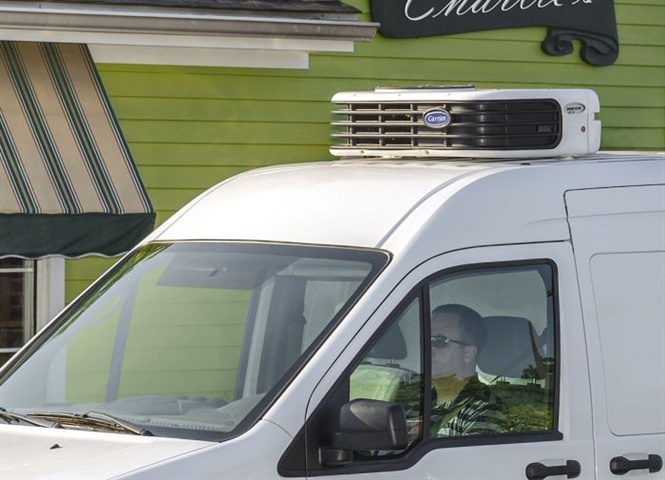Optronics announces new family of directional warning lights


The cab sits low and well forward of the steer axle. One step and the driver and his helpers are inside and ready to go after trash – after a packer body's installed, of course.
Photo: Tom Berg
">The cab sits low and well forward of the steer axle. One step and the driver and his helpers are inside and ready to go after trash – after a packer body's installed, of course.
Photo: Tom Berg
">Not all trash trucks are born alike. The one you see here is from Crane Carrier Co., better known as Crane and badged “CCC.” It was built in New Philadelphia, in eastern Ohio, and is a model LET2 CC, meaning low-entry tilt, second generation, crew cab. It's rather roomy in a world where most refuse trucks seat two, or three in a pinch.
Crane now belongs to Hines Corp., a holding company that also owns Kimble Mixer, which serves the concrete industry. Following Hines' acquisition of Crane a couple of years ago, Kimble's plant in New Philly made room for CCC production formerly done in Tulsa, Okla. In a way, this grass-green truck is returning to its ancestral roots, for the buyer is the sanitation department in Ponca City, Okla.
The cab is exceptionally roomy because about half of it sits ahead of the engine. This leaves room for a full-width floor and two-man seat in the center, plus individual seats for the driver and a third helper. This is the configuration for operators that employ manpower to “tip” customers' trash cans into the body's bin, eliminating complex automated loading apparatus. While on the way to a route or the landfill, the entire crew can be safely seated.
I sampled this vehicle during a visit to the plant where staffers briefed me on it. Soon I fired up its Cummins ISL9 diesel, punched the Allison automatic into D and headed out to the gate and onto nearby streets. The truck was easy to drive, though without a body it accelerated quicker than normal and its ride was a little stiff.
I did some Y-turns and complete circles and found the turning radius was short enough for easy maneuvering on tight city streets, where the truck will spend much of its life. Turning was smooth, too, because the chassis had a single drive axle with a lifted tag axle. Visibility in all directions was excellent. It was a kick to drive, and all I needed were some companions in the cab and a packer body behind, and I'd have gone to work.
Related: Kenworth T680 Shows off Lightweight Specs
Follow @HDTrucking on Twitter

read more

Carrier Transicold's Neos 100S electric refrigeration unit uses a vehicle's alternator to electrically power the system allowing for constant cooling or heating capacity regardless of engine speed.
The refrigeration unit is designed to keep cargo fresh or frozen while in transit suited to florists, grocers and other business that use small refrigerated trucks and delivery vans.
“Road-proven for more than six years in Europe, where it was first introduced, the Neos 100S unit's ability to deliver constant refrigeration capacity provides a significant advantage for vehicles driven in congested urban environments,” said Tina Hickman, truck product manager, Carrier Transicold.
With its compressor housed inside the condenser unit, the Neos 100S unit does not need to run lengthy refrigerant lines between the vehicle's engine and condenser. This decreases the number of fittings, reduces the amount of refrigerant needed.
The main condenser assembly can be nose-mounted to the front of a truck box or mounted to the roof of a delivery van. As a split system the Neos 100S design places the evaporator on the ceiling of the cargo area.
The Neos 100S unit is rated to provide 3,600 Btu of cooling at a setpoint of 35 degrees Fahrenheit and 100 degrees Fahrenheit ambient and produces the same capacity in standby mode. Use of the optional electric-standby module enables the unit to be plugged into a 230-volt electric power source when parked, removing the need to idle the truck to maintain refrigeration.
Follow @HDTrucking on Twitter



American Trucking Assns.' advanced seasonally adjusted (SA) For-Hire Truck Tonnage Index decreased 2.1% in July, following a revised 1.6% decline during June. In July, the index equaled 134.3 (2000=100), down from 137.1 in June. The all-time high was 144 in February.
Compared with July 2015, the SA index rose just 0.3%, the smallest year-over-year gain in 2016. In June, the year-over-year increase was 2.1%.year-to-date, compared with the same period in 2015, tonnage was up 3.2%.
read more